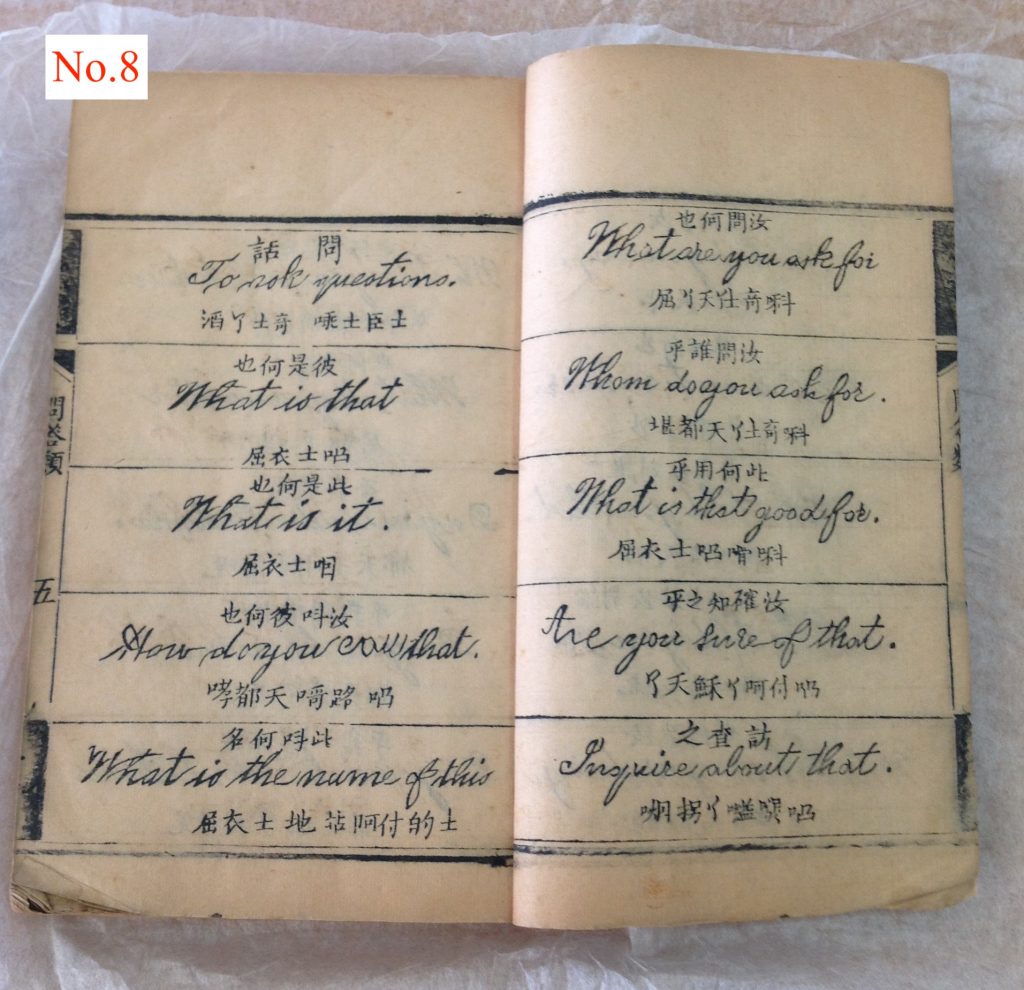
This is one of a number of phrasebooks and Chinese/English dictionaries that were produced at various times in Australia and other places around the world where Cantonese speakers found they had to communicate in English. Rather than a stampede of impoverished peasants fleeing rebellions that largely took place in other provinces (the Taiping is a favourite due the a co-incidence of dates with the main mid-19thcentury gold rushes), such works demonstrate the organisation and support this migration of people’s engendered. [See No. 29]
The edition pictured was given by Quong Tart (see No .23 & No. 50) to one of his employees, Alf Hughes, and is now in the Ashfield Historical Society. (See Ashfield 8) Though whether given as a souvenir or because he expected his employee to learn some Chinese is unknown. It is one of many editions and similar versions of phrasebooks produced throughout the 19thcentury. The Chinese Museum in Melbourne for example has an early edition of a ‘Zhu’ phrasebook (English through the Vernaculars of the Canton and Shiuhing Prefectures). This volume has been dated as between c1857 and c1862.
These phrasebooks give set phrases that might have been useful to a new arrival and indicate the kind of interaction with English speakers that was anticipated. For example: ‘Do you not understand me?’ or vocabulary such as, ‘pantry’ and ‘cellar’. This might be expected of any phrase book. But of particular interest in these is the presence of the Chinese dialects.
Thus in the Zhu phrasebook there are four lines of text. The first line is a translation of the English phrase using classical Chinese with perhaps some vernacular. The second line is the English phrase to be learned. The third line is the English phrase transliterated into Chinese characters using in this case a Siyi dialect that was common among the Chinese of Victoria and California. Finally the fourth line is a transliteration of the phrase into Chinese characters using a Cantonese vernacular. This last made the phrasebook more widely useful than that of Quong Tart’s, which only had the meaning in characters, then the English, then a transliteration in one dialect.
Dialects and the many Chinese languages are an important aspect of Chinese Australian history increasingly forgotten. The current national language of China – Mandarin – was almost non-existent in Australia before the later half of the 20thcentury. Even what we now think of as ‘Cantonese’ was merely one of many dialects and languages spoken by those of the Pearl River Delta area. As well the main written language of China in the 19thcentury was not one of the many spoken languages but rather ‘Literary’ or Classical Chinese, sometimes with vernaculars mixed in.

